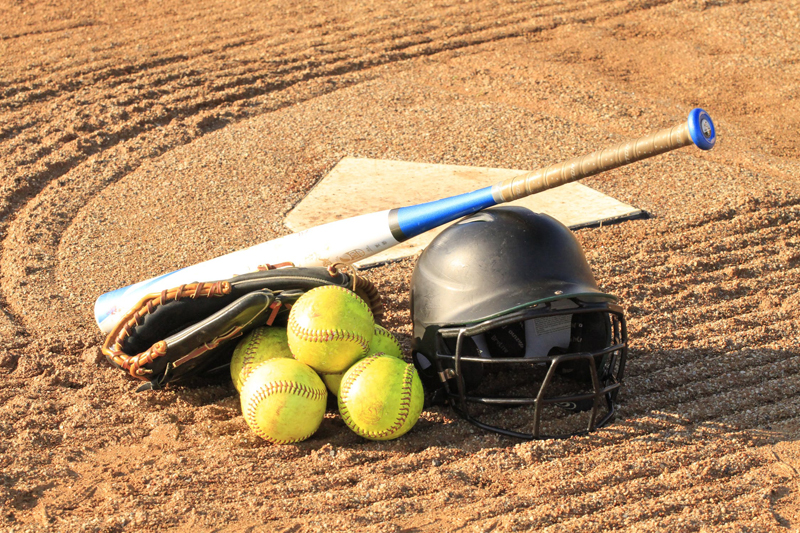Signals and Signs in Softball

When young players learn the game of softball, coaches start with the basics. They teach fundamentals of the game and get the kids used to catching and batting. Older and more experienced players will get accustomed to signals and signs, that help players, coaches and even umpires relay messages.
Probably before players even start learning about signs from each other or their coaches, they will see the umpires using their hands. For example, the official will hold up their hands and put up the number of fingers that pertain to how many strikes or balls the batter has on them. This official will usually speak what they are signing but will use signs so that if you can't hear them you can still see the call. When a runner is called safe or out, the umpire will make gestures, according to how the play is called. A closed fist on their hand means the player is out. Open, flat hands mean the player is safe. You can usually hear the official, too, because they tend to yell the call.
Pitchers and catchers use hand signals instead of their voices, so that pitches that they have planned won't be heard by the batter. If you've seen professional catchers use their fingers to "choose" a pitch, then you know what this looks like. In most baseball or softball movies, like "Major League" or "A League of Their Own," the catchers and pitchers communicate in this way. The catcher and pitcher work together, based on the batter, runners and number of outs, to come up with a strategy that will end the inning.
Coaches also use hand signals to communicate with their players. They use signs telling their batter what to do. For instance, the team learns the signs ahead of time in practices so in a game, the coach can use one of the signs to either tell them to bunt, swing full, let the ball go by, etc. This way, the opposing team doesn't know the signals and isn't prepared for what the batter will do. Coaches also use hand signals, as well as their voices, to coach their runners at first and third bases. The coach teaches the players to watch them instead of the ball so they can concentrate fully on running. The coach then instructs them, vocally and gesturally, to either "round the base" and keep going or to stay at the base, sometimes necessitating a slide.
Other simple gestures include "waving" someone to come in from the outfield or motioning them to step back further. Once coaches and players get to know the signals and signs, they can communicate secretly so that only members of their team know what is going on. This is a big advantage of keeping the element of surprise.
Probably before players even start learning about signs from each other or their coaches, they will see the umpires using their hands. For example, the official will hold up their hands and put up the number of fingers that pertain to how many strikes or balls the batter has on them. This official will usually speak what they are signing but will use signs so that if you can't hear them you can still see the call. When a runner is called safe or out, the umpire will make gestures, according to how the play is called. A closed fist on their hand means the player is out. Open, flat hands mean the player is safe. You can usually hear the official, too, because they tend to yell the call.
Pitchers and catchers use hand signals instead of their voices, so that pitches that they have planned won't be heard by the batter. If you've seen professional catchers use their fingers to "choose" a pitch, then you know what this looks like. In most baseball or softball movies, like "Major League" or "A League of Their Own," the catchers and pitchers communicate in this way. The catcher and pitcher work together, based on the batter, runners and number of outs, to come up with a strategy that will end the inning.
Coaches also use hand signals to communicate with their players. They use signs telling their batter what to do. For instance, the team learns the signs ahead of time in practices so in a game, the coach can use one of the signs to either tell them to bunt, swing full, let the ball go by, etc. This way, the opposing team doesn't know the signals and isn't prepared for what the batter will do. Coaches also use hand signals, as well as their voices, to coach their runners at first and third bases. The coach teaches the players to watch them instead of the ball so they can concentrate fully on running. The coach then instructs them, vocally and gesturally, to either "round the base" and keep going or to stay at the base, sometimes necessitating a slide.
Other simple gestures include "waving" someone to come in from the outfield or motioning them to step back further. Once coaches and players get to know the signals and signs, they can communicate secretly so that only members of their team know what is going on. This is a big advantage of keeping the element of surprise.
This site needs an editor - click to learn more!

Related Articles
Editor's Picks Articles
Top Ten Articles
Previous Features
Site Map
Content copyright © 2023 by Traci Falb. All rights reserved.
This content was written by Traci Falb. If you wish to use this content in any manner, you need written permission. Contact
BellaOnline Administration
for details.


